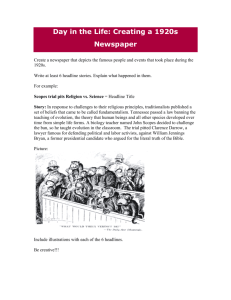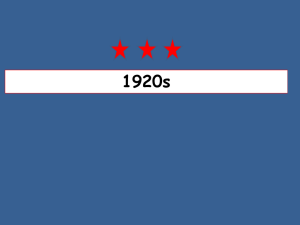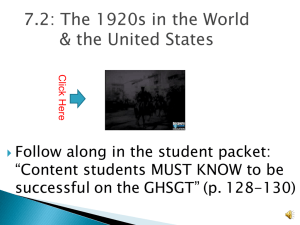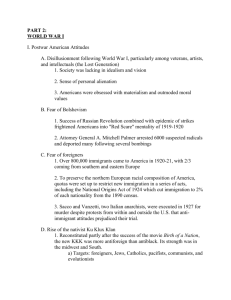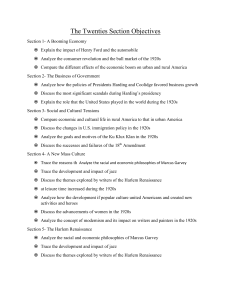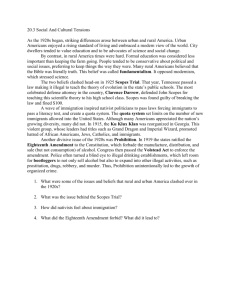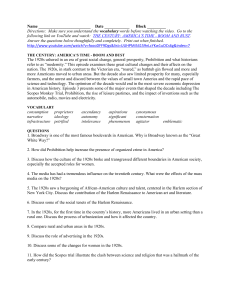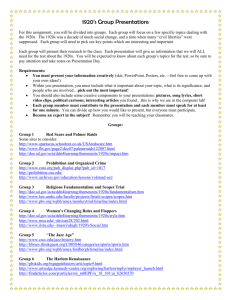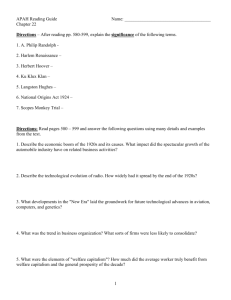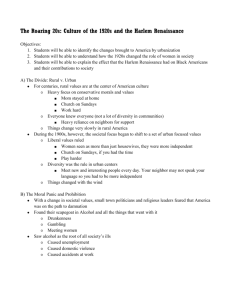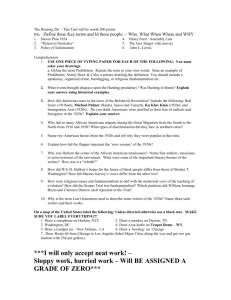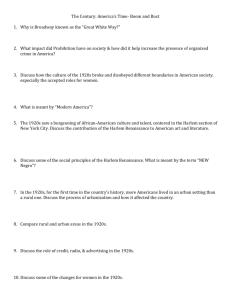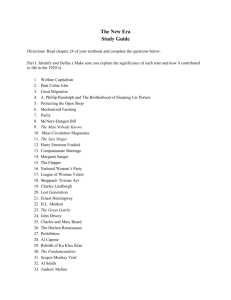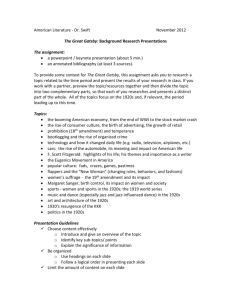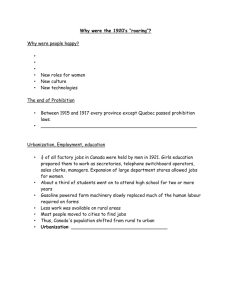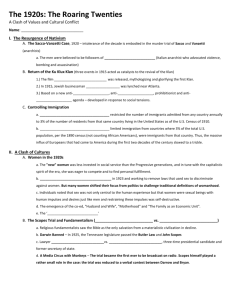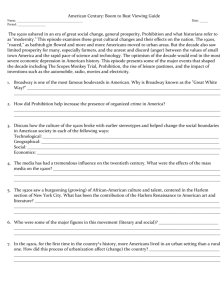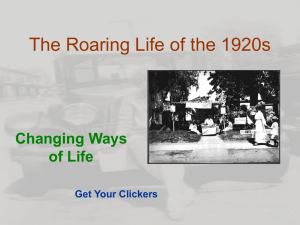Webquest
advertisement
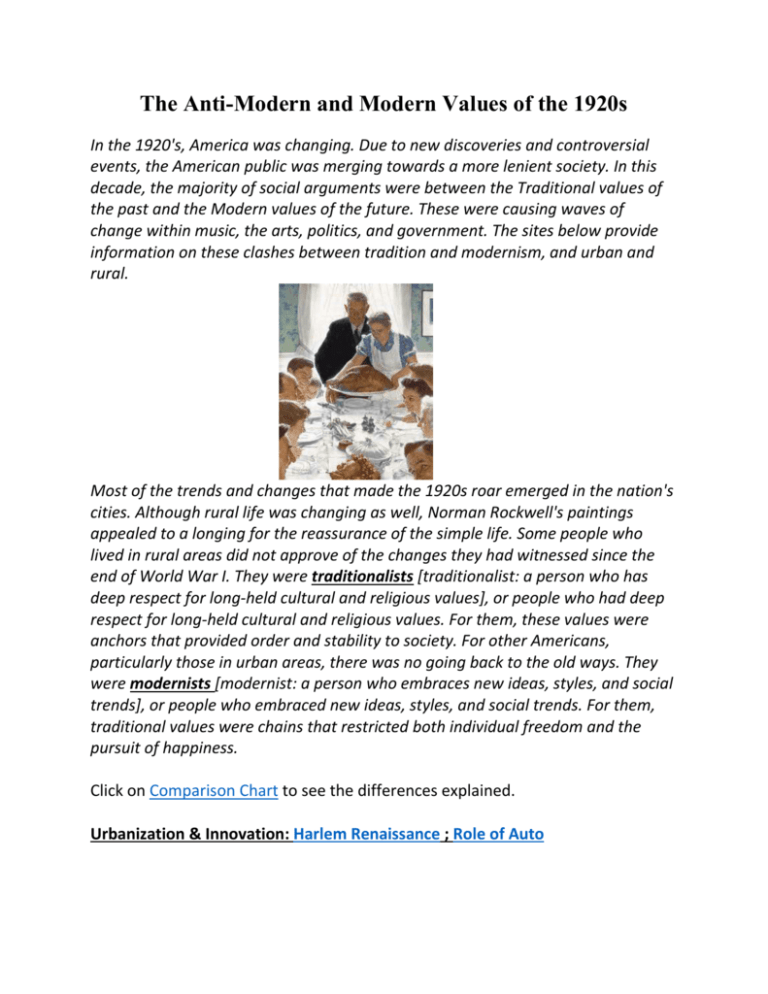
The Anti-Modern and Modern Values of the 1920s In the 1920's, America was changing. Due to new discoveries and controversial events, the American public was merging towards a more lenient society. In this decade, the majority of social arguments were between the Traditional values of the past and the Modern values of the future. These were causing waves of change within music, the arts, politics, and government. The sites below provide information on these clashes between tradition and modernism, and urban and rural. Most of the trends and changes that made the 1920s roar emerged in the nation's cities. Although rural life was changing as well, Norman Rockwell's paintings appealed to a longing for the reassurance of the simple life. Some people who lived in rural areas did not approve of the changes they had witnessed since the end of World War I. They were traditionalists [traditionalist: a person who has deep respect for long-held cultural and religious values], or people who had deep respect for long-held cultural and religious values. For them, these values were anchors that provided order and stability to society. For other Americans, particularly those in urban areas, there was no going back to the old ways. They were modernists [modernist: a person who embraces new ideas, styles, and social trends], or people who embraced new ideas, styles, and social trends. For them, traditional values were chains that restricted both individual freedom and the pursuit of happiness. Click on Comparison Chart to see the differences explained. Urbanization & Innovation: Harlem Renaissance ; Role of Auto 1. What changes did the move of African Americans to the North cause in 1920s America? 2. Explain the term "Harlem Renaissance" and identify the key black writers associated with this movement. 3. What were some of the important African American achievements in the arts during the 1920s? 4. What did the Harlem Renaissance contribute to both black and general American history? 5. The reading states that “Perhaps no invention affected American everyday life in the 20th century more than the automobile.” Discuss how. Social Issues: Scopes Monkey Trial 1925; Teenagers 1. What was the charge brought against Scopes? 2. How did Darwinism and the Scopes trial symbolize the conflict between the fundamentalists and the modernists? What role has the Scopes Trial played in popular culture? 3. How did the life of a teenager change during the 1920’s? Leisure & Entertainment: Books & Movies ; Fads and Heroes ; Flappers What role did the movies play in American life in the 1920s? How did the arts reflect the values of the 1920s? How did they challenge those values? 3. What changes took place in the way Americans used their time during the 1920s? 4. How was the "Flapper" reflective of those challenges? How was the flapper different from her mother? From you today? 5. Why was Charles Lindbergh seen as the first modern international hero? 1. 2.



